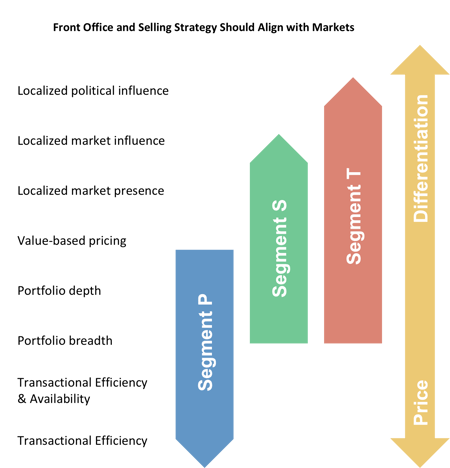The company was going to market on a national basis with a sell-the-site strategy and a robust portfolio of products and services behind customer-aligned Sales Engineers. Behind the front lines, Sales Support and Services would do whatever it took to help close and support customers. This strategy blurred lines of responsibility and accountability and hid the true profitability for each division. While the overall company was clearly profitable, it wasn’t sure how accurate the relative differences between divisions were, and thus, the potential market value for its legacy business was unclear.
With significant experience helping companies understand where and how they truly make money, the WP&C team set to work in the Front Office and Supply Chain to:
- Assess true profitability by division and product line
- Push current thinking and develop clear, and even provocative, alternatives for how to best take the business forward
- Rationalize product lines, redesign the front office, and reconsider necessary overhead
- Find ‘quick wins’ in the areas of processes, practices, policies, and pricing that would fund the effort of accelerating change
- Develop a clear case for action, commitment, and a resourced path forward that would receive the board’s enthusiastic approval

After the assessment phase, and with new clarity on where and how the business was making money, WP&C and the management team worked together to:
- Rationalize product lines and SKUs that no longer aligned with (or couldn’t support) profitability expectations
- Implement quick wins in pricing and customer policies (such as shipping terms) that could be implemented immediately
- Realign field sales on product first and then geography; the sell-the-site approach of the past was ineffective and unable to satisfy customers with distinct buying factors
- Establish formal distribution management and inside sales capabilities and more clearly define and align the role of sales support
- Re-engineer how and where it should all be managed—management structure needs to change and new capabilities are critical for growth
WP&C’s assessment of true profitability by division and product line revealed that their current go-to-market approach and organization (Sales, Sales Support, Service, etc.) was no longer fit-for-purpose and suffered from wasteful overlapping roles and responsibilities. Working closely with the management team, and benefiting from the keen oversight of the board, WP&C developed a blueprint for transforming the business, so detailed it even went down to roles and named-individual levels. Armed with new insight on profitability and growth potential, the business chose to keep its legacy business, but transform its go-to-market approach, shifting to a more product-centric structure. The management team made new, bold commitments to the board regarding profitability and growth and they set upon their journey to:
- Fully realize the identified ‘quick wins’ in pricing and policies
- Grow the business significantly faster than previous commitments
- Improve overall EBIT by over 30% in three years
The management team met its commitments and new levels of value were realized. Just a year later, ownership was able to sell the entire enterprise, getting a higher multiple on top of improved EBIT.

